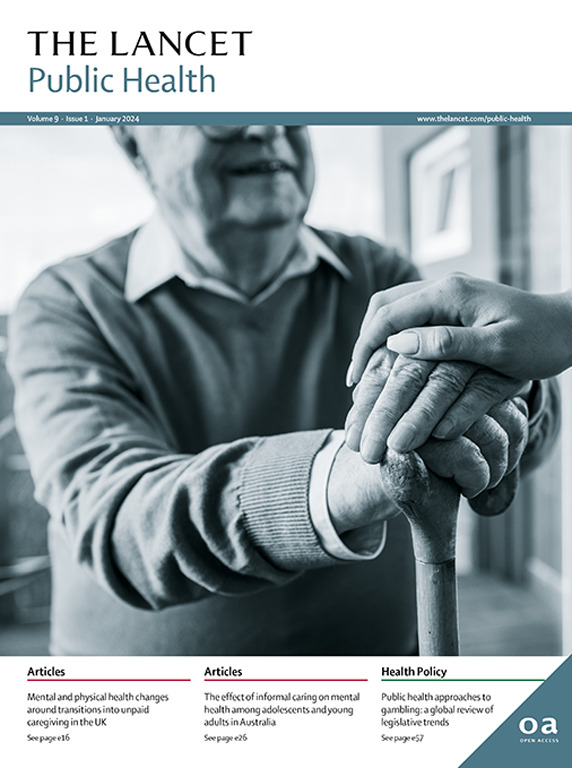Effect of the COVID-19 pandemic on incarceration and tuberculosis
IF 25.4
1区 医学
Q1 PUBLIC, ENVIRONMENTAL & OCCUPATIONAL HEALTH
引用次数: 0
Abstract
Although preventable and curable, 10·8 million people were diagnosed with tuberculosis and 1·25 million people died from tuberculosis in 2023.1 It is a disease that disproportionately affects marginalised groups—for instance, it has been clearly shown that there is a high tuberculosis incidence and low case detection rate in prison populations globally.2 Indeed, WHO has identified incarcerated people as an important population who should be prioritised for tuberculosis control efforts.3 However, although data show an adverse effect of the COVID-19 pandemic on the years of progress tackling tuberculosis at global, regional, and country levels,4 there has been a paucity of data investigating the effect on specific marginalised populations. Amy Zheng and colleagues’ study,4 which examined annual trends in incarceration rates and tuberculosis notifications among incarcerated people in Europe and the Americas before (pre-2020) and during (2020–22) the COVID-19 pandemic, is therefore an important contribution to the understanding of disease control in prisons during the pandemic.求助全文
约1分钟内获得全文
求助全文
来源期刊

Lancet Public Health
Medicine-Public Health, Environmental and Occupational Health
CiteScore
55.60
自引率
0.80%
发文量
305
审稿时长
8 weeks
期刊介绍:
The Lancet Public Health is committed to tackling the most pressing issues across all aspects of public health. We have a strong commitment to using science to improve health equity and social justice. In line with the values and vision of The Lancet, we take a broad and inclusive approach to public health and are interested in interdisciplinary research.
We publish a range of content types that can advance public health policies and outcomes. These include Articles, Review, Comment, and Correspondence. Learn more about the types of papers we publish.
 求助内容:
求助内容: 应助结果提醒方式:
应助结果提醒方式:


